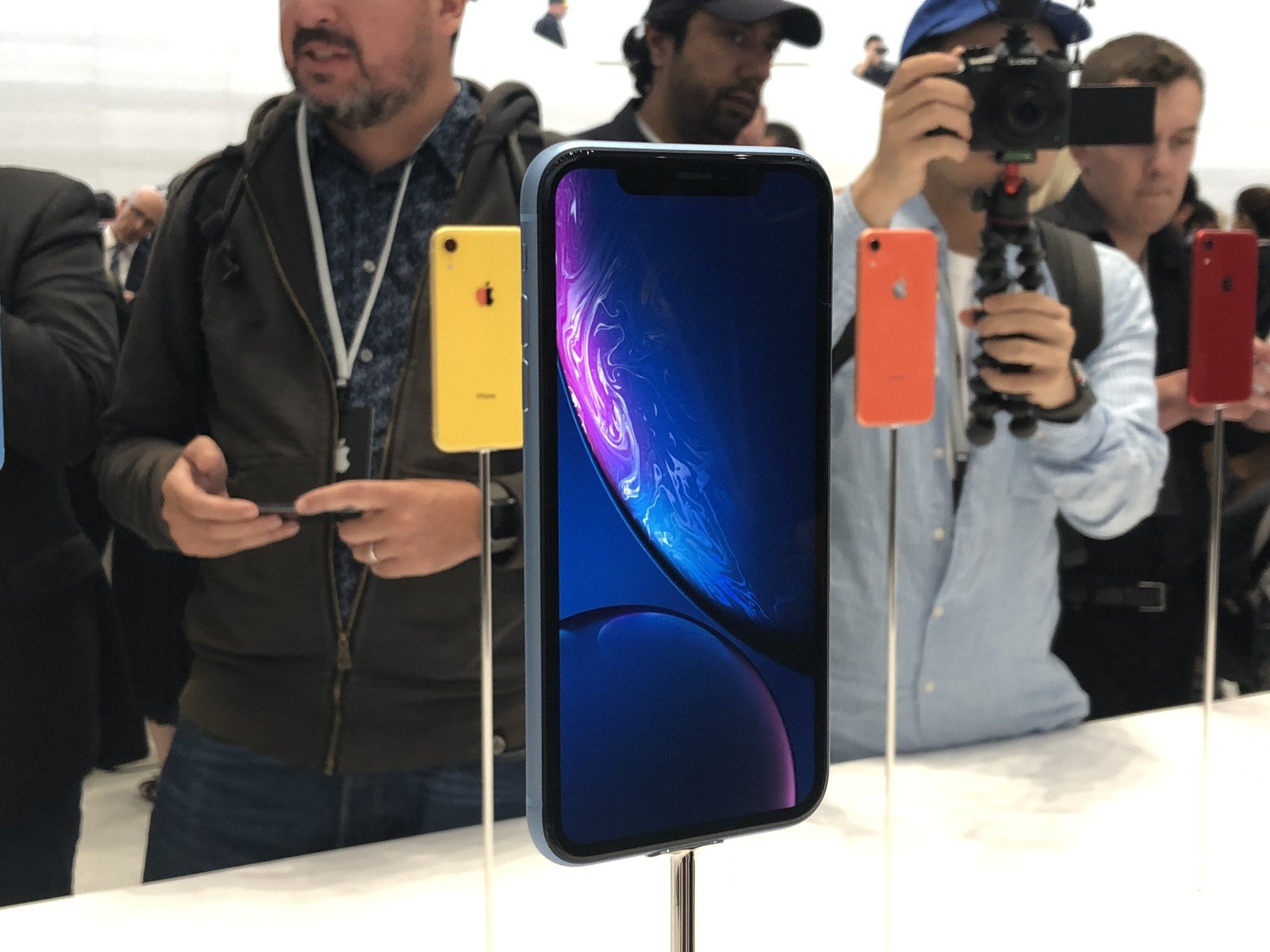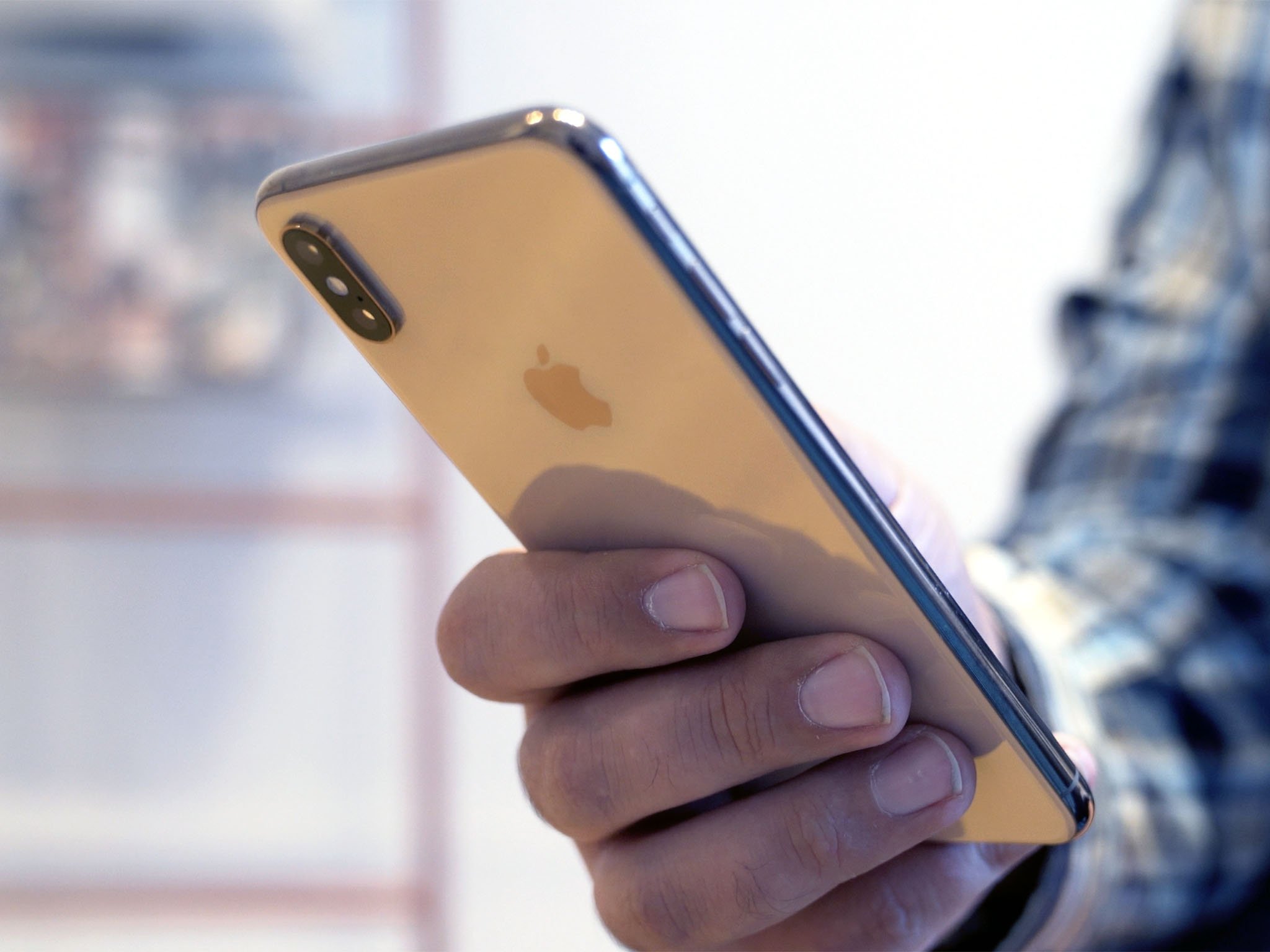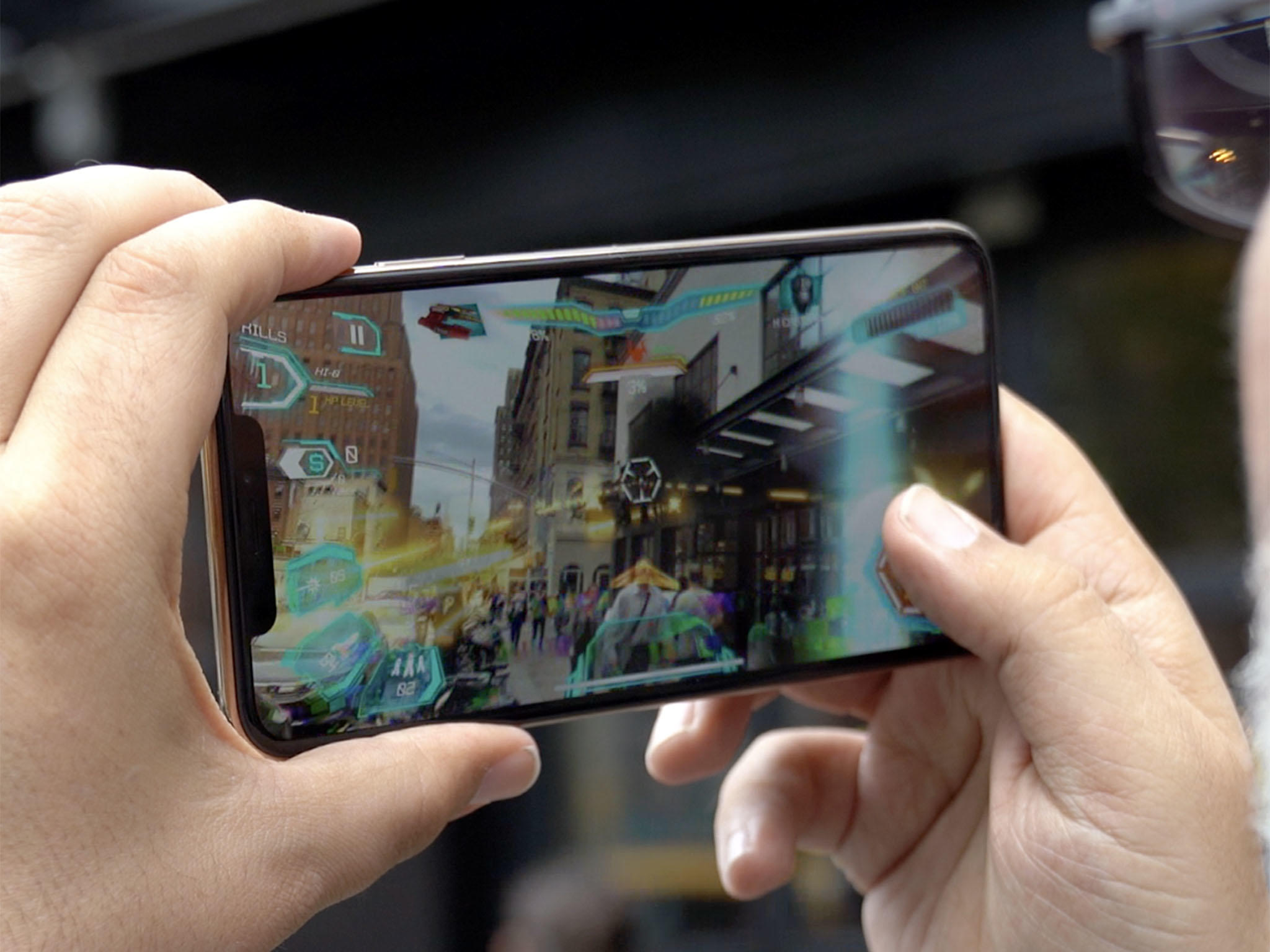'iPhone XR doesn't have a 1080p display?!' explained

There's been some confusion over the last few days about iPhone XS, iPhone XS Max, and iPhone XR specs. Part of that is Apple's fault because, unlike screen density and storage capacity, they don't list RAM and battery capacity. And part of it is the fault of broken-internet, which, like broken telephone, passes along information often without context or clarity, resulting in it getting warped and distorted in a way that's significantly less than helpful.
Don't want to read? Watch the video version and subscribe for more!
So, let's dig into it.
Memory
I've covered the difference between Apple and Android processors — systems-on-a-chip or SoC — before. TL;DR: Apple has the advantage of serving only one customer: Apple, and using only one processor: Apple. Qualcomm has to make chips that see to the needs of a wide range of vendors and Samsung typically bifurcates it's chips between Qualcomm and it's own Exynos.

What does this have to do with RAM? The SoC includes the RAM. It's like a RAM sandwich. It has to feed the needs of all the software running on it. But, like many things in silicon, it's not about quantity, it's about efficiency.
Because iOS is native code, not interpreted, and because it doesn't have to worry about things like garbage collecting that code, since, after a brief flirtation with it, it switched to the much more efficient automatic reference counting, it simply doesn't consume as many resources.
Now, there's always a case to be made for more RAM. Every time I switch apps only to come back and have Instagram or my Safari tabs reload, I very much want to argue that very case.
Master your iPhone in minutes
iMore offers spot-on advice and guidance from our team of experts, with decades of Apple device experience to lean on. Learn more with iMore!
But, RAM also comes at a cost. It and the processes that run in it, consume power, which lowers battery life. There's a lot apps can do to lower their memory footprint as well. Especially under iOS 12, where Apple spent a year having the frameworks engineers optimize the crap out of pretty much everything, and for that very reason.
So, yeah, it would be nice if Apple included 4G of RAM for iPhone XS and iPhone XS Max in the keynote, on the tech specs page, and on the box. But then they'd have to explain why it's a lower number than some Android phones have on their tech spec pages and boxes. And while people seem to understand that just because a Ferrari has fewer tires than a Mac, it can still go faster and handle better, because it's not hauling a trailer behind it, processor performance isn't anywhere nearly as mainstream.
Which may be why it needs more explaining?
Battery
Power — surprise surprise — is also all about efficiency. Look no further than one of my favorite accessories of the past few years: The iPhone Smart Battery Case. It launched in December without the benefit of a Phil Schiller keynote pitch and without much of any kind of context from Apple. That led to busy reviewers looking at it, doing a quick back-of-the-napkin price to capacity comparison, saying OMG THAT HUMP as many times as they could, and then dismissing it as ugly and expensive.

Now, it was obviously both those things. But it was also the best damn battery case you could buy. And most people missed it because they were looking at capacity not efficiency. Because the hump got the battery mass away from the antennas, it didn't block any signal. In fact, it was designed to boost the signal. That meant, unlike all previous cases, the radios in the phone didn't have to ramp up, costing significantly more power just when you were trying to save it.
Because it also kept iOS in mobile mode, instead of plugged-in mode, it also prevented expensive networking tasks from triggering, which also typically burned power in other cases just when you wanted to save it.
With iPhone XS you have a slightly smaller battery than the previous iPhone X, but you have a significantly smaller processor. The world's first 7-nanometer, as Apple made sure to tell us right up front. That saves power. You also have other efficiencies in everything from the controller to iOS 12 that result in the slightly smaller battery lasting slightly longer — about 30 min. longer.
Apple doesn't list the milliamp hours for its batteries either, and maybe it should, but it likely wants to avoid having to asterisk it and footnote the entire context I just provided.
I'd prefer if they did, but I get that 90% of people don't know or care what that number means, 2% probably really understand what it means within the complete architecture and management system of the device — and I'm certainly not one of them. And the other 8% of us would just look at it, have no clue what it really means, but just rush to get our blog posts and videos live so we can yell about it in absolute yet valueless terms to the real benefit of almost no one.
Oh, and I do think Apple should putting more battery in, not less. Apple still seems utterly convinced that weight is a primary factor for usability. That, while people might like the idea of larger batteries in the abstract, what they really want to do to is hold up their phones for increasingly long periods of time to game, watch videos, even read. And the heavier the phone is, the more annoying it is to do that in bed, on planes, in lines, in waiting rooms, where ever.
So, Apple is all about keeping or slightly improving battery life while keeping or slightly reducing weight. And that's fine in a world where, you know, Instagram, Facebook, Pokémon Go, and most streaming apps were actually well coded and didn't just fire up your GPS, screen, and data and drain your battery as fast possible.
It's for that, and the oncoming age of 5G, augmented reality, and artificially intelligent… everything, that I think Apple should keep on holding the line… just make that line slightly higher.
And put out a next-generation of smart battery cases already, dammit.
Screens
iPhone XR, which comes out in October, as a significantly lower screen resolution and density than iPhone XS and iPhone XS Max. That's depressed some people. It depresses me too. But maybe for different reasons.
Let's go back to 2010 and iPhone 4, the first Retina Display. There's been a whole lot of work done on high density and resolution independence by Apple and others, but what Apple did with iPhone 4 was incredibly straight forward and simple: They doubled the amount of pixels in every point. Instead of @1x it was now @2x, and that was it. Sure, designers had to make @2x assets, but that wasn't a huge hurdle.
To understand the difference, imagine a point on a display. On the original iPhone up to iPhone 3GS, that point was drawn with a single pixel. On iPhone 4, that dot was drawn with 4 pixels. It didn't make a huge different for dots or squares, but for angles and curves, you could produce fidelity that was, literally, twice as good.
So good that, when you looked at them from typical viewing distances, the pixels disappeared and all you could see were clean angles and curves.
That's because Retina — or HiDPI — is a function not just of resolution and size, but distance. It's the same reason a 4K TV doesn't look much different than a 1080p TV of equal size if you're sitting more than 10 feet away. Increase the size or decrease the distance, then you start to see the difference.
Now, displays are expensive. Not just in terms of the cost for the part itself, but the power it takes to light it up and push its pixels around. Unless you need density for a specific use-case, like a VR headset where the distance is so close you need the resolution to be as high as technologically possible — 4K per eye, please! — you're just wasting power with any pixel most people can't discern at a normal viewing distance.
With iPhone 6 plus, Apple went to @3x internally. That means every point went from a 2x2 pixel grid to a 3x3 pixel grid. But, Apple only went to 1080p for the display. So, they used a scaler to take that @3x image and squeeze it down onto that 1080p display. Some people, the ones who were particularly sensitive, could see the scaling and the flicker it caused for single pixel lines. For most, it was fine.
For iPhone XS Max and iPhone XR, Apple is doing two very different things. For iPhone XS Max, Apple is letting @3x be @3x. The result is a 2688-by-1242-pixel resolution at 458 ppi. For iPhone XR, Apple is letting @2x stay @2x. That results in a 1792-by-828-pixel resolution at 326 ppi.
iPhone XS Max is literally the iPhone XS Super retina display with more pixels to fit a physically larger screen and iPhone XR is literally the iPhone 4/5/6/7/8 regular Retina display with more pixels to fit a physically larger screen.
So, you don't get the density of the Plus but you don't have to deal with the scaling either. Personally, I prefer the scaling, but I'm not the only person in the world and I don't every time get what I want.
Does this affect apps? No, not at all. Remember, points stay constant regardless of pixels. And app developers have all sorts of tools now, including size classes and auto-layout. So, @2x vs. @3x is meaningless for any of that.
Same with YouTube or any other video. Yes, you won't get pixel accurate 1080p video on an iPhone XR the way you would an iPhone Plus. Well, you wouldn't get it anyway because it's not 16:9 the way the Plus was, but pillar-boxing not withstanding, you will get either scaled up 720p or scaled down 1080p. (Any video service could choose to send either to an iPhone XR — 1080p would simply use more bandwidth but give you better interpolation.)
You'll have the same issue on an iPhone XS or iPhone XS Max, just stepped up. They're both bigger than 1080p but not big enough for 4K, so you'll get upscaled 1080p video or, maybe, downscaled 4K.
Will you notice the difference? Again, with the exception of VR headset use, not really, and those want 4K, probably closer to 8K per eye, and no phone display is anywhere near that.
The far, far bigger deal with iPhone XR is that it doesn't support HDR — because it's LCD and not OLED. Apple worked another engineering miracle making an LCD display without bezels that could stand up next to the iPhone X and iPhone XS displays — and I've used them all, and it really does — but LCD simply can't do HDR.
And it's High dynamic range, not high density, that really is the state of the art of video these days.
Specsational
I get that a lot of people are really passionate about specs and that it's often emotional, not logical arguments that take over. becasue feelings, not facts, right? But all of these discussions benefit immensely from a little reason and a lot of logic.
It's easy to grab a number, get your rage on, write a magazine article, knock out a blog post, or film a video. And if you say "Apple fanboys might disagree", it's also easy to insulate yourself from rational, logical, factual retort. Because anyone who disagrees with your hottest of hot takes has to be a fanboy, right? Wrong. So allow me to retort.
People interested in these products deserve information. Absolutely. But they deserve and should demand that information in context. What it is is easy. What it really means is hard. But that's the job.

Rene Ritchie is one of the most respected Apple analysts in the business, reaching a combined audience of over 40 million readers a month. His YouTube channel, Vector, has over 90 thousand subscribers and 14 million views and his podcasts, including Debug, have been downloaded over 20 million times. He also regularly co-hosts MacBreak Weekly for the TWiT network and co-hosted CES Live! and Talk Mobile. Based in Montreal, Rene is a former director of product marketing, web developer, and graphic designer. He's authored several books and appeared on numerous television and radio segments to discuss Apple and the technology industry. When not working, he likes to cook, grapple, and spend time with his friends and family.
